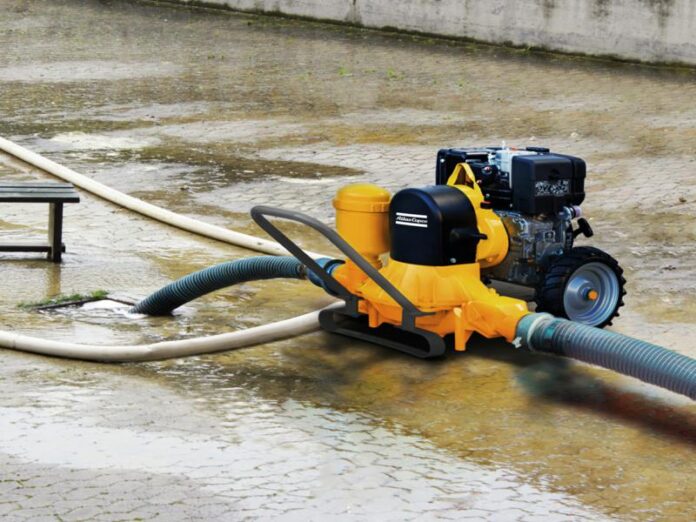The name dewatering proclaims that this pump is used to remove water, and it is a centrifugal pump that is used whenever and wherever you need to remove water. This pump is used in tunnels and mines, at construction sites and to remove unwanted water from buildings, or surface water, and to lower the water table. This pump is installed in a building to reduce the water level and then maintain it, for example, underground mining. Pumps are available in a broad range which includes centrifugal end-suction pumps, well-pointing piston pumps, and submersible pumps
On the construction site, dewatering is often required. Before workers can start working which includes drilling and digging to create cellar space, foundations or shoring. Dewatering ensures the safety and productive access to minerals. This is a process that usually continues for the lifespan of the mining operation.
A dewatering process involves the removal or drainage of water from a riverbed, construction site, caisson, or mine shaft by means of pumps. In industries such as power plants, underground mines, flood dewatering, cement plants, thermal plants, and construction, dewatering pumps are used. In construction sites situated at lower ground levels, these pumps are installed to maintain and control water levels in the ground. By eliminating the costs associated with the handling of solids, they are a cost-effective option.
The question which remains is to use which pump for dewatering. The answer to it is, it depends on various factors. The type of groundwater, the depth of the water, the environment, and where the water will be discharged.
Pumps used to control groundwater
submersible pumps
centrifugal end-suction pumps
well-pointing piston pumps
a.) submersible pumps
By converting rotary energy into kinetic energy into pressure energy a submersible pump pushes water to the surface. When the water is pulled into the pump this process happens. The very first thing that happens is the intake, the place where the rotation of the impeller pushes the water through the diffuser, and then from here, it goes to the surface. It is an air-tight sealed motor close-coupled to the pump body. Using submersible pumps has its benefits and the main advantage of using this pump is, it prevents pump cavitation, this is a problem that is associated with a high elevation difference between fluid surface and pump.
b.) centrifugal end-suction pumps
Pumps with end suction are one of the most common types of centrifugal pumps. They work by increasing the velocity of liquid as it moves along the vanes of the impeller; the liquid then moves into the volute casing, where a diffusion process transforms the high velocity into high pressure.
c.) well-pointing piston pumps As part of the pumping system, the piston produces a pulsating vacuum, so there are no clogs in the good points. A single-cylinder engine is required and it does not contain any vacuum pumps or associated oiling systems typical of other wellpoint pumps.








